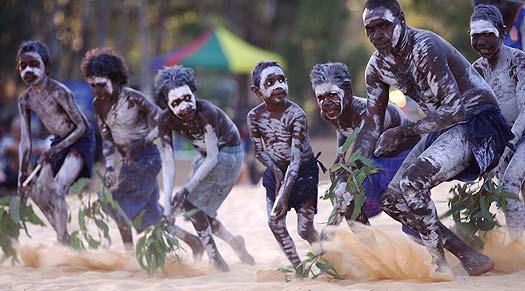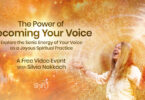Contributing writer for Wake Up World
“To watch us dance is to hear our hearts speak.” ~ Hopi Indian saying
There is not one culture on Earth that does not have a long tradition of dance. This suggests that dancing, the act of moving in time to music, is central to the experience of being human. It is such a key form of cultural expression that it has been called the “universal language”. Every culture in the world has a customary style of dance that communicates aspects of the group’s identity, creativity, rituals, history and meaning. In fact, it has even been suggested that a person could learn as much, if not more, about another culture through participating in their dance as they could reading an anthropological paper.
A recent study led by researcher Bronwyn Tarr from Oxford University produced further evidence that demonstrates that dancing plays a role in supporting and strengthening social cohesion. Tarr, a dancer and experimental psychologist, postulated that dance, being essentially cooperative in nature, could have played a role in our evolution by encouraging social bonds and other pro-social behaviour between community members.
Other studies have found that people who performed synchronous tasks (doing similar movement at the same time) together were more likely to have positive feelings about the other participants and were more likely to engage in positive social behaviour within the group. It is believed that this is because these unified actions obscure the barriers between self and others, making it easier to think in terms of the collective, rather than individual good.
This particular study wanted to examine the difference between dancing individually (with self-generated moves) and dancing collectively (following a set of established moves). It was also designed to measure the effects of exertion on levels of social bonding.
For this experiment the researchers recruited two hundred and sixty-four mixed gender high school students from local schools on Marajó Island, Brazil. To establish synchrony conditions, the participants were asked to perform the same movements to the same music at the same time. For non-synchrony conditions the participants were asked to perform their own individual sequence of moves. Exertion was controlled by having participants learn dance moves that required them to be standing and using all their body (high exertion condition) or tiny, low impact hand gestures that could be performed while seated (low exertion condition).
The wider group was broken down into small groups of three. Every micro group could decide whether they participated in high or low exertion activities and whether their moves were synchronous or not. Each participant was asked to measure their sense of connection to the others in their sub group before and after the experiment.
Another noteworthy aspect of the study was that participants were fitted with wrist cuffs that measured levels of endorphins in their bodies.
The study found that those who participated in synchronous dance activities were much more likely to have an elevated sense of connection to the other members of the micro groups than those who engaged in their own unique dance moves. As well those that engaged in synchronous moves, and high levels of exertion were found to have higher levels of endorphins, which translates to higher pain thresholds.
Tarr stated, “Maybe this is why we love to flashmob, because we’re hitting both these two things: we’re getting this elevated pain threshold, from the feelgood chemicals pumping through our systems, but also we feel more connected to others because we’re doing the same thing at the same time and that signals the sense of connective oneness we like to get.”
What I find particularly interesting about this study is that, as discussed at the start of this article, dance is a means to express our cultural values and perceptions, and while we all come from cultural traditions that embraced some form of synchronous dance style, today in Western societies the most common style of dance is an individual based one. This mirrors our modern social identity which has become increasingly focused on the individual. While historically cultures have evolved with an emphasis on the collective, today in the West where the emphasis is on the individual, we also see a culture that is plagued by problems that relate to alienation and disconnection.

Aboriginal boys and men dancing in unison at the annual Garma Festival.
There is a saying in many shamanic cultures that if you came to the medicine person with a complaint of despondency or depression, the first question you would be met with might be, “When did you stop dancing?” Maybe this is the question we need to ask to our society as a whole: “When did we stop dancing in unison?”
The answer would be in the 1960’s, the same time we saw the sexual revolution exploding in society. In many respects dancing, being both physical and often intimate could be seen as a socially acceptable form of sexual expression. The Sixties was about freedom, and throwing off the shackles of tradition and institution. People at that time ceased being interested in following established convention and wanted to be free to explore themselves and express their uniqueness. The rebellion against social conformity resulted in a rejection of communal, synchronised dance.
Humans tend to go to extremes before we settle into balance. Perhaps that is where we are right now. Many of us have found and celebrated our individuality but lost a sense of connection and belonging. Fortunately there’s no reason we have to choose one or the other.
Now that we are once again starting to recognize and appreciate the importance of community for our sense of well being, and seeing an increase in the evidence that demonstrates that dance has the ability to help us bond with our fellow humans, perhaps we will see a resurgence in large-scale, inclusive, synchronic global dance trends that takes us beyond the somewhat shallow and limited ‘La Macarena’ and ‘Gangnam Style’.
Dance, which can be primal or highly refined, interpretive or choreographed, messy or polished, has always been an important tool for forging towards, and reconnecting with the deeper aspects of being. As we re-member the importance of honouring both our uniqueness and our relationship to humanity as a whole, dance may be seen once more as that powerful, natural, and healthy activity that is central to our being and has the capacity to connect us to our external world, our internal world and that sacred space where everything meets.
“Dance is the hidden language of the soul” ~ Martha Graham
Study source:
Recommended articles by Christina Lavers:
- Are You a Bridge Between Two Worlds?
- Addictive Behavior Related to Low Levels of Oxytocin, the “Love/Bonding Hormone”
- New Study Shows Regular Contact with Nature Reduces Crime, Increases Social Cohesion
- Sugar is as Addictive as Cocaine – Here’s How You Can Kick the Habit
- Research Shows Just 7 Minutes of Meditation Can Reduce Racial Prejudice
- Taking Care of Our Inner Tribes – Microflora, Awakening and You
- Groundbreaking Study Maps the Decline of Wild Bee Communities in the United States
- More Evidence That TV is Dumbing Us Down
- Synchrony and Exertion of Dancing Found to Encourage Social Bonding, Raise Pain Threshold
- Quitting Smoking? Try These Herbs, Tips and Incentives to Help You Succeed!
About the author:
Christina Lavers is a writer, an artist, a creative enthusiast, and an inner world explorer. Born in Montreal Quebec Canada, she now lives with her life partner and son in a rainforest pocket in the hills behind Coffs Harbour, NSW Australia. She spends her time playing, creating, growing and sharing.
Christina is devoted to assisting people to find and connect with their own creative magical current that flows deep within. She is now offering a comprehensive e-course designed to help people light up their world with passion and creativity. You can access Section One here for free!
Christina has also recently published her first full length book, a memoir about her wild awakening journey entitled Jump Into the Blue, and she is currently working on the next one.
“My journey has been about personal alchemy… exploring the mysteries of my soul and my environment, and learning to bring all aspects, the light and the dark, together with the transcending ingredient… love. The more I uncover and nurture the wounded aspects of my being, the more whole and grounded I feel and the more my outer world reflects the love, wonder and magic I have discovered inside”.
You can follow Christina’s work at:

If you've ever found value in our articles, we'd greatly appreciate your support by purchasing Mindful Meditation Techniques for Kids - A Practical Guide for Adults to Empower Kids with the Gift of Inner Peace and Resilience for Life.
In the spirit of mindfulness, we encourage you to choose the paperback version. Delve into its pages away from screen glare and notifications, allowing yourself to fully immerse in the transformative practices within. The physical book enriches the learning process and serves as a tangible commitment to mindfulness, easily shared among family and friends.
Over the past few years, Wake Up World has faced significant online censorship, impacting our financial ability to stay online. Instead of soliciting donations, we're exploring win-win solutions with our readers to remain financially viable. Moving into book publishing, we hope to secure ongoing funds to continue our mission. With over 8,500 articles published in the past 13 years, we are committed to keeping our content free and accessible to everyone, without resorting to a paywall.








